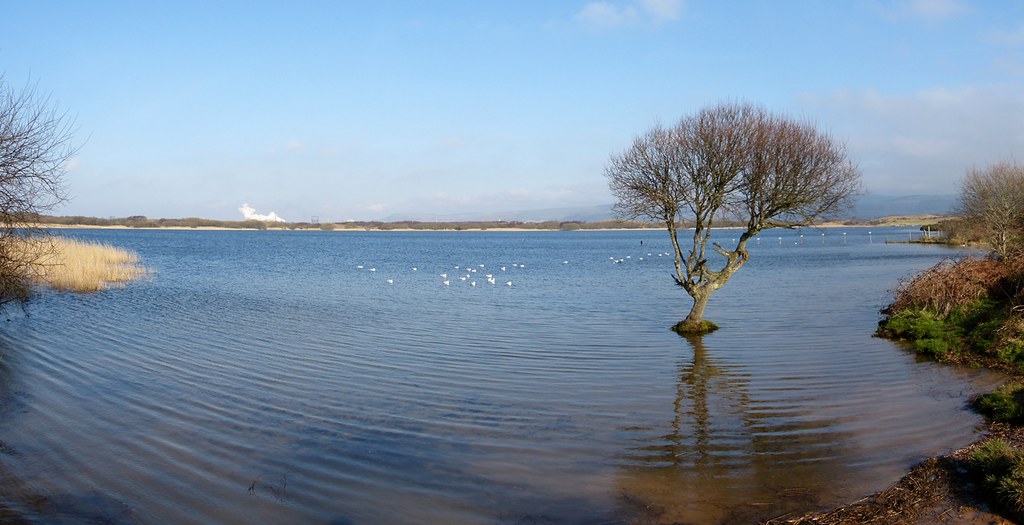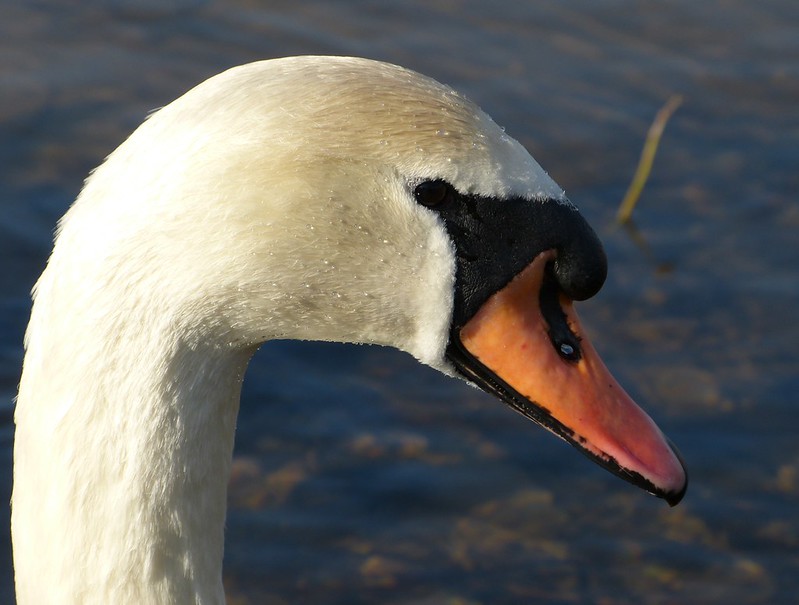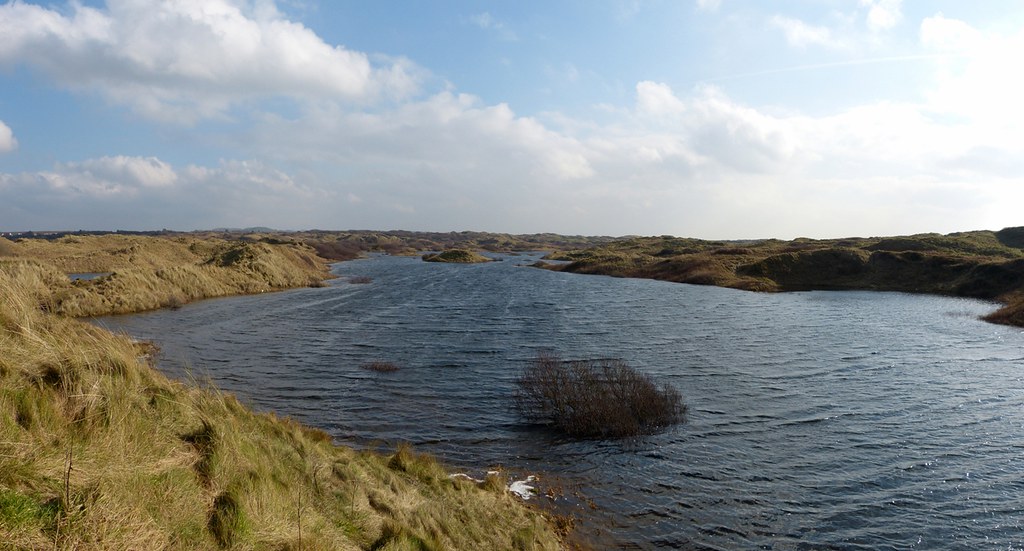In all the years that I’ve been visiting Kenfig NNR, Sunday was the very first opportunity I’ve ever had to photograph this ‘classic’ view. For once all the important elements of a blue sky, high water level and no people combined to kick start what turned out to be a very productive day.

I guess we should start with waterfowl seeing as we’re already at the pool, my personal highlights of which were a pair of courting Great Crested Grebes and at least nine Goldeneye. I say at least because every time I looked up another couple had appeared, seemingly out of nowhere. Not that that’s a bad thing of course given that they’re easily my favourite winter ducks. Far more numerous were the Tufted Ducks and Pochards, the latter being particularly pleasing as I get the distinct impression that we’ve been seeing less and less of them locally in recent years. A couple of Gadwall and Mallard plus four very flighty Shovellers rounded things off.
Since my last visit goose numbers have noticeably increased with upwards of forty eight Canada Geese now grazing the banks along with a new Greylag to keep the resident bird company. I wonder how long until we see the first chicks? As usual all of this activity was far too distant for my camera but I did manage a very pleasing shot of a Common Gull perched on one of the sunken fences.

One species that seemingly couldn’t get close enough were a family of three Mute Swans. They obviously thought that we had food and I didn’t quite have the bravery to let them know that I’d already eaten it. Fortunately they took this disappointment in their stride and even posed for a couple of head shots.


Walking along the waters edge was a very muddy affair given the large quantity of rain that we’ve already had this year, and it came as no surprise that we couldn’t even make it to the furthest hide. Our efforts were rewarded though with great views of three Common Snipe erupting from the reeds. There’s also the possibility that Emma saw one of the Bitterns coming into land, but as I didn’t let’s just gloss over that. Fortunately we both made no mistake when it came to the Black-necked Grebe which is still showing very well after sticking around for the last few weeks.
The theme of excess water was one repeated out in the dunes where I have never seen the area quite so flooded. Huge inland seas have been created between the dunes themselves with even the haul road flooded in places. It was a most impressive and somewhat alien landscape given that we normally associate sand dunes with heat and drought.

Unsurprisingly birds were quite thin on the ground in these areas but the little vegetation there was held several of these caterpillars. I believe they belong to the Fox Moth whose caterpillars are apparently the largest and hairiest found in the country. They feed themselves up between June and September, overwinter in leaf litter until spring and them emerge to sun themselves before pupating. I presume the unusual occurrence of a clear day had encouraged them out of hiding to do just that. Certainly none looked to be in a hurry.

Out at Sker Point the low tide meant that what waders there were had moved off into the distance though we still managed to pick out several Curlew and Oystercatcher. A lot closer were three Stonechats which seemed to be competing for territory, whilst over at the farm three Mistle Thrushes and a flock of Starlings were feeding until a stunning Sparrowhawk put them all into flight. While on the subject of the farm I spent another fruitless half hour scanning for the Little Owls which I know are there somewhere but never seem able to locate. We became convinced that a rock in one of the barn windows was an owl, but in the end couldn’t be confident enough to say for certain. It probably didn’t help that it refused to move a single inch (which I guess it wouldn’t if it really was a rock!). To finish off we popped by the feeding point between the car parks and were delighted to see two Yellowhammers amongst the eight Reed Buntings. A real star bird anywhere though especially at Kenfig where they have become virtually extinct.



1 Comment
holdingmoments · February 22, 2013 at 5:08 am
Love the shot of the dunes Adam.
Unusual to see a caterpillar out this time of year I would have thought.